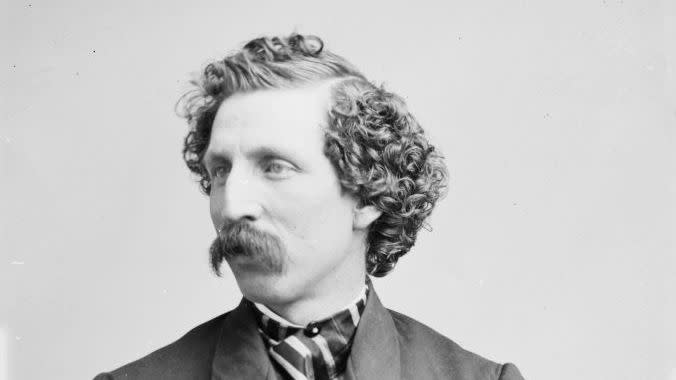Charles Farrar Browne Pioneered Stand-Up Comedy in America and Inspired Mark Twain

- Oops!Something went wrong.Please try again later.
- Oops!Something went wrong.Please try again later.
- Oops!Something went wrong.Please try again later.
With dozens of televised specials available to stream at the press of a button, it’s hard to imagine a time when stand-up comedy was a new fad. But about 160 years ago, newspaper writer Charles Farrar Browne proved the genre had a bright future.
Browne is considered the pioneer of American stand-up comedy for his live performances as alter ego Artemus Ward, a character he introduced in 1858 while writing for The Plain Dealer in Cleveland. The popularity of the character inspired a best-selling book enjoyed by President Abraham Lincoln and helped inspire the writings and speeches of author Mark Twain.
To mark April Fool’s Day, learn about Browne’s life and legacy as a funnyman.
Browne’s Early Life and Career
Browne was born April 26, 1834, in Waterford, Maine, to parents Levi and Caroline Farrar Brown—Charles added the “e” to his last name years later. He started his professional life as a printer’s apprentice before moving to Boston. There, he began writing for a humor magazine.
According to Ideastream Public Media in Cleveland, Browne moved to Ohio in 1854 and worked for newspapers in Toledo and Tiffin before joining The Plain-Dealer as a columnist in October 1857. At the newspaper, he introduced the Artemus Ward persona in a written letter on January 30, 1858, according to Case Western Reserve University.
Browne continued to write as Ward and began sending copies to Vanity Fair in New York, creating friction between him and The Plain-Dealer founder Joseph W. Gray. The founder wanted Browne to write exclusively for the newspaper but declined to increase his pay. Browne left the job on November 10, 1860, and moved to New York on his way to becoming editor of Vanity Fair.
Contemporaries described Browne in pleasant terms. According to the Portland Press Herald, humorist Charles Pfaff said Browne “was thoroughly good-natured, incapable of malice toward anyone, with a capacity for gentleness and tenderness.” He would often write with one leg draped over the arm of his chair and was prone to burst into laughter.
The Artemus Ward Character
Brown used the Ward character—that of a Yankee circus showman loosely based on P.T. Barnum, according to the Mark Twain Project—to deliver social commentary.
Browne’s writings as Artemus featured blatant misspellings, illustrating the character’s lack of formal education. They also reflected the common attitudes of the time, which were marked by massive racial and sexual inequality. Because of this, much of Browne’s material appears politically incorrect—or even downright racist—by modern standards.
But the act proved popular, and in the early 1860s, Browne began traveling the United States and Canada to perform as Ward in a routine called “The Babes in the Wood.” On stage, Browne told outrageous stories with a straight face and deadpan delivery, selling the Ward identity to great effect.

Browne’s success with the character led him to publish Artemus Ward: His Book in May 1862. President Lincoln enjoyed the book and actually read parts of it to his cabinet before presenting the Emancipation Proclamation, according to Lehigh University.
Influence on Twain and Death
The most notable part of Browne’s legacy is his connection with Twain. The two met at a show in Virginia City, Nevada, in December 1863 and became friends, according to the Mark Twain Project.
Browne gave career advice to Twain and encouraged him to submit one of his short stories, Jim Smiley and His Jumping Frog, for publication in November 1864. The story eventually debuted the next year and brought Twain instant recognition. The deadpan delivery Browne used on stage also influenced Twain’s persona during his public speaking tours.
In 1866, Browne traveled to London to perform “The Babes in the Wood” for a new audience. But he frequently went out to drink and meet with writers from Punch magazine, and he began struggling to even make it through his shows, according to Lehigh University. Within two months overseas, he contracted tuberculosis and grew increasingly ill.
Browne eventually died on March 6, 1867, at age 32 in Southampton, England. He was buried in London, but his remains were later moved to his hometown of Waterford.
During a November 1871 lecture highlighted in The Albany Evening Journal, Twain called Artemus Ward “America’s greatest humorist, not manufactured or bogus, but a born humorist.” So the next time you’re laughing along to your favorite comedian on Netflix, don’t forget Browne’s foundational role in the evolution of American humor.
You Might Also Like

